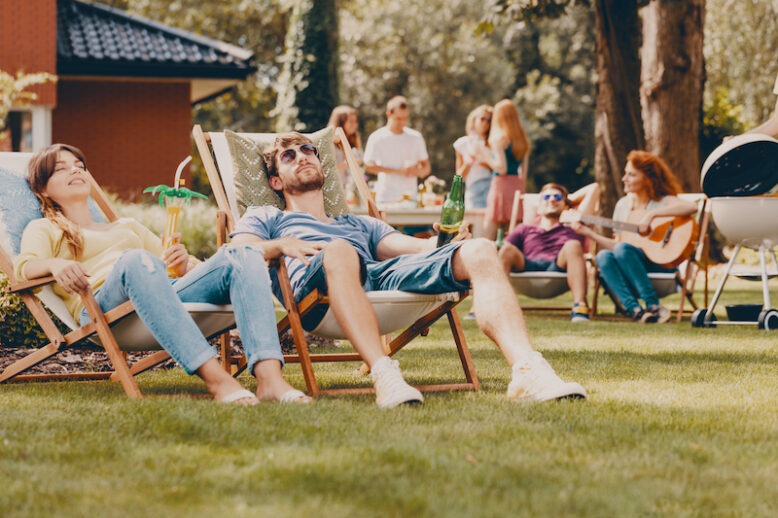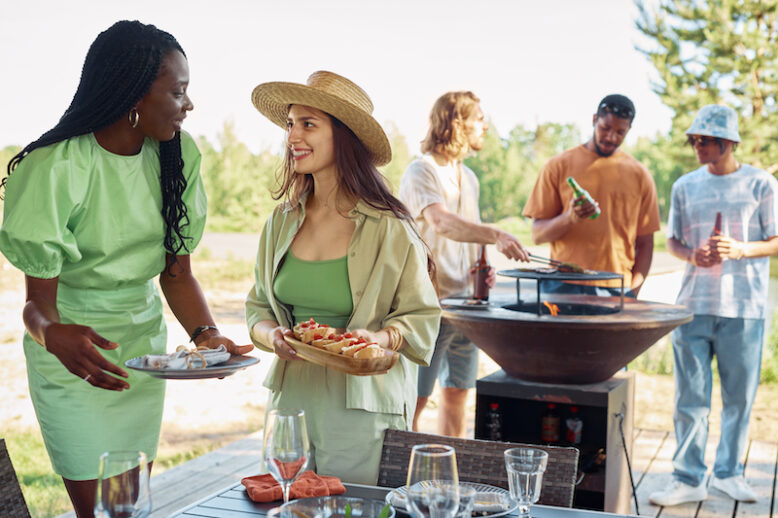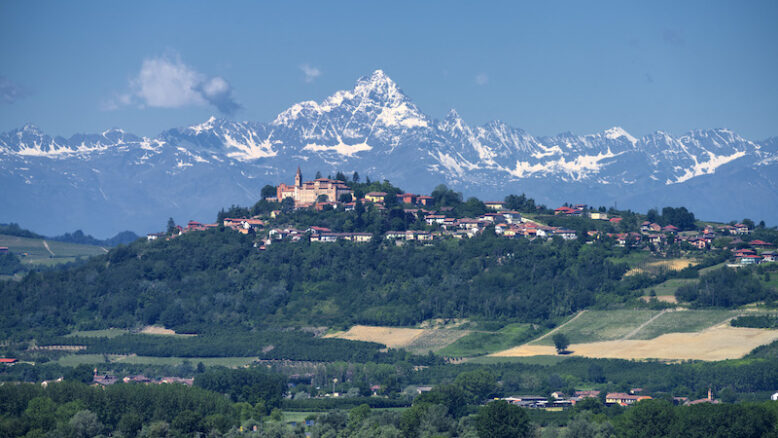Ferragosto is an Italian national holiday celebrated on August 15th that marks the peak of summer. It’s a day when the ordinary takes a break, letting the joys of life grab the spotlight – think day adventures, BBQ feasts, beachside bonfires, and firework shows with family and friends.
Ferragosto è una festa nazionale che cade il 15 agosto e segna il picco della stagione estiva. È il giorno in cui la routine si prende una pausa, lasciando spazio alle piccole gioie della vita – gite fuori porta, grigliate, falò sulla spiaggia e spettacoli di fuochi d’artificio in compagnia di amici e famigliari.

Every year, as May arrives, “Got any plans for Ferragosto?” becomes the hot question in every chat between friends. Yet, beyond just brainstorming ideas and making plans for this special day, there are some captivating fun facts to uncover, starting right from the origin of its name…
Ogni anno, a partire da maggio, “Hai programmi per Ferragosto?” diventa una delle domande più gettonate nelle conversazioni tra amici. Ma oltre a idee e programmi su come trascorrere questa giornata di festa, ci sono anche tante interessanti curiosità da scoprire, a cominciare proprio dal suo nome…

When did Ferragosto start?
Quando ha avuto inizio il Ferragosto?
To trace the origins of Ferragosto, we must rewind the clock to 18 B.C. when Octavian Augustus, the first Roman emperor, established the “Feriae Augusti” (translated as the “repose of Augustus”). His intent was to grant everyone a period of rest and celebration after the demanding labours of the harvest season. This occasion also served as an opportunity to engage in a variety of rituals, all aimed at preparing for the upcoming winter. Interestingly, the month of August itself derives its name from this very emperor!
Per scoprire l’origine del Ferragosto in Italia, dobbiamo tornare al lontano 18 a.C., quando Ottaviano Augusto, il primo imperatore romano, istituì le “Ferie di Augusto” come momento di riposo e festa per tutti dopo il duro lavoro durante la stagione del raccolto. Era anche l’occasione per svolgere tutta una serie di rituali in preparazione dell’inverno. Oh, e a proposito, anche lo stesso mese di agosto prende il nome dell’imperatore!
In its earliest inception, Ferragosto was celebrate on August 1st, and the festivities extended for several days. The whole Roman Empire lit up with celebrations, including games, horse races, and farm animals adorned with intricate flower decorations. Additionally, it was customary for peasants to bestow well wishes upon the landowning elite in exchange for tips and small gifts.
All’inizio, Ferragosto cadeva il 1° agosto, e le festività duravano diversi giorni. In tutto l’Impero c’erano feste, con giochi, corse di cavalli e animali da traino agghindati con decori floreali. Inoltre, era usanza per i contadini fare gli auguri ai proprietari terrieri ricevendo in cambio mance e piccoli regali.
Back then, Ferragosto was linked to various pagan celebrations, most notably the Consualia, which were devoted to Consus, the deity associated with earth and fertility. Things changed in the 7th century when the Catholic Church decided to associate Ferragosto with August 15th, a momentous day in the Catholic calendar as it marks the celebration of the Assumption of Mary into heaven.
A quel tempo, Ferragosto era legato a diverse festività pagane, in particolare alle Consualia dedicate a Conso, il dio della terra e della fertilità. Le cose cambiarono a partire dal 7th century quando la chiesa cattolica decise di associare il Ferragosto al 15 agosto, giorno importante sul calendario cattolico perché si celebra l’ascesa al cielo di Maria.
This fusion of pagan and religious elements has made Ferragosto really special: a time where people come together for both spiritual reflection and good times.
Questa fusione di elementi pagani e religiosi ha conferito a Ferragosto un carattere davvero unico, in cui spiritualità e convivialità si intrecciano.
What do people do on Ferragosto in Italy?
Come si festeggia Ferragosto in Italia?
Ferragosto is one of those special holidays that perfectly embodies the essence of togetherness, sharing, and lightheartedness that are integral to Italian culture. To put it simply, it’s a cherished occasion not just for locals but also for tourists who visit the country during these days.
Ferragosto è una di quelle festività che ben rappresenta l’idea di convivialità, condivisione e spensieratezza che sono parte integrante della cultura italiana. In altre parole, è un momento speciale sia per gli italiani che per i turisti che visitano il paese in quei giorni.
Many Italians seize the opportunity of Ferragosto to escape their town for a day or to go on vacation, especially when it falls near a weekend. This creates the so-called “ponte di Ferragosto” (literally “bridge of Ferragosto“), which means taking one or two additional days off to connect Ferragosto to the weekend and enjoy a longer break.
Molti italiani approfittano di Ferragosto per fare una gita fuori porta o andare in vacanza, soprattutto se cade vicino al weekend e si può sfruttare un bel ponte.

In true Italian style, food plays a pivotal role at Ferragosto, with great picnics and delightful lunches that bring together family and friends. Alongside fish and classic prosciutto with melon, the Ferragosto menu features all those dishes that nutritionists strictly advise against, especially in the August heat: from lasagna to slow-cooked chicken with bell peppers, we indulge in it all!
Come è tipico in Italia, il cibo gioca un ruolo importante anche a Ferragosto, con grandi picnic e bei pranzi in compagnia di famiglia e amici. Oltre al pesce e al classico prosciutto e melone, il menu di Ferragosto comprende tutti quei piatti rigorosamente banditi dai nutrizionisti, soprattutto con il caldo di agosto: dalle lasagne al pollo con i peperoni, non ci facciamo mancare niente!

All across the country, special masses are organised in honour of the Madonna, and it’s quite common to come across events and processions that blend the holiday’s religious significance with historical traditions and reenactments. Notable examples include the boat procession at Santa Maria di Leuca, the Assumption Cavalcade in Fermo, the Marine Palio of Argentario, and the world-famous Palio of Siena, which takes place on August 16th.
Vengono celebrate messe speciali in onore della Madonna, e non è raro imbattersi in particolari eventi e processioni in cui lo spirito religioso della festività si mescola a tradizioni e rievocazioni storiche. Ne sono esempio la processione in barca a Santa Maria di Leuca, la Cavalcata dell’Assunta a Fermo, il Palio Marinaro dell’Argentario e il famosissimo Palio di Siena, che si svolge il 16 agosto.
Even in the smallest villages, they make sure to create opportunities for people to come together. They organise concerts, festivals, parties, and, why not, even special rituals just like the ancient Romans used to do. And as the evening sets in, it’s a common tradition to enjoy stunning fireworks that beautifully wrap up this day of celebration.
Anche nei paesi più piccoli vengono organizzati momenti per stare insieme, come concerti, sagre, feste e persino riti propiziatori, come si faceva ai tempi dei romani. La sera, poi, è consuetudine ammirare spettacolari fuochi d’artificio per concludere in bellezza questa giornata di festa.
Ferragosto and the Italian tradition of the scampagnata
Ferragosto e la tradizionale scampagnata
When we think of Ferragosto, the first things that usually come to mind are picnics and scampagnate, the classic escapes from the hustle and bustle of daily life. These cherished traditions have their origins in the early 1930s, during the Fascist regime. Back then, the Ministry of Communications came up with the idea of the “Ferragosto trains.” These trains were designed to offer budget-friendly travel opportunities, making it possible for individuals with limited financial means to discover the beauty of Italian cities, beaches, and mountains.
Quando si pensa al Ferragosto, le prime cose che vengono in mente sono i picnic e le scampagnate, le classiche gite fuori porta. Queste tradizioni hanno origine nei primi anni ’30 del secolo scorso, durante il regime Fascista. A quel tempo, l’allora Ministero delle Comunicazioni ebbe l’idea di istituire dei “treni di Ferragosto” per permettere anche a chi aveva meno possibilità economiche di visitare città italiane, spiagge e montagne a prezzi ridotti.

In 1933, director Raffaello Matarazzo made a movie called “Treno Popolare,” which followed the escapade of a group of people on one of these trains from Rome to Orvieto. As we watch this movie today, we can clearly spot the early origins of mass tourism in Italy.
Nel 1933, il regista Raffaello Matarazzo ne realizzò addirittura un film – “Treno Popolare” – che seguiva le avventure di un gruppo di persone in viaggio su uno di questi treni da Roma a Orvieto. Guardandolo oggi, troviamo chiare tracce dell’origine del turismo di massa in Italia.
The offer of the Ferragosto trains was exclusively valid on August 13th, 14th, and 15th, offering two options: the “One-Day Excursion” covering a radius of approximately 100 km, and the “Three-Day Trip” that stretched it to around 200 km. And since these excursions didn’t include meals, people brought with them pranzi al sacco (packed lunches), and this is how the whole Ferragosto picnic tradition kicked off!
L’offerta dei treni di Ferragosto era valida solo il 13, 14 e 15 agosto, in due modalità: l’ “Escursione di un Giorno” copriva un percorso di circa 100 km, mentre con il “Viaggio di Tre Giorni” ci si poteva spostare in un raggio di 200 km. E dato che queste gite non includevano i pasti, le persone iniziarono a portare con sé il pranzo al sacco, dando così vita al tradizionale picnic di Ferragosto!


Valentina Nicastro is a travel writer in love with her home country, Italy. Having travelled widely around the globe, she realised there was more to explore closer to home and decided to put the passport aside for a while. When she is not immersed in documenting Italy, you’ll find her donning her communication consultant hat, weaving words as a content writer and bridging linguistic divides as a translator.


